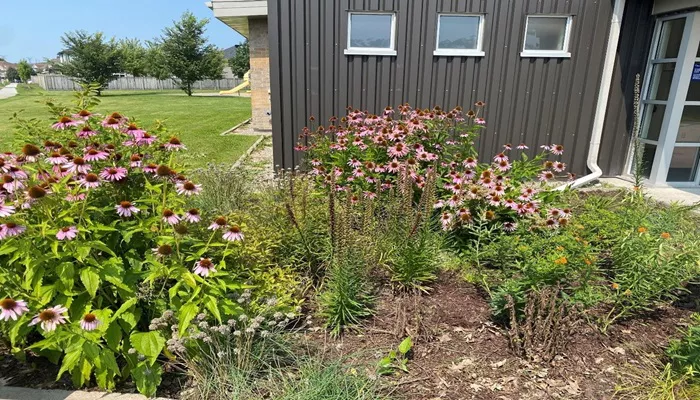Drought is increasingly becoming a critical challenge, affecting up to 55 million people worldwide and posing significant threats to both flora and fauna. The stress from drought causes biochemical and physiological changes in plants, reducing nutrient levels and damaging ecosystems, which in turn affects human health and livelihood.
Innovative Device Developed to Monitor Plant Health
To better understand how plants respond to drought, scientists at Kaunas University of Technology (KTU) in Lithuania have created a groundbreaking device. Linas Svilainis, a KTU professor and one of the inventors, noted that this initiative arose from collaboration between KTU researchers and the Spanish National Research Council (CSIC).
Monitoring the physiological health of plants is essential for mitigating harmful effects and improving crop yields. Traditional methods of assessing plant health can harm the plant and often take a long time to yield results. In contrast, the new device is non-invasive, employing non-contact ultrasound to measure uncut leaves.
Drought Impact on Vineyards
Initially designed for vine trees, the technology has proven applicable to other plant species. Vine trees are especially susceptible to drought due to their shallow roots, which limit their ability to extract water from the soil. Water scarcity results in lower yields and alters the grape composition, affecting sugar and acidity levels that determine wine quality. Thus, monitoring these plants is vital to regulating irrigation and avoiding overwatering.
European vineyards, which produce over 50% of the world’s wine, faced hotter and drier conditions in 2022. As a result, 18% of these vineyards were at risk of drought. This year, the Spanish Ministry of Agriculture, Food and Fisheries anticipates a more than 20% decrease in Spanish wine production due to the ongoing drought.
Device Functionality and Benefits
Professor Svilainis explained that their device can extract mechanical properties from ultrasound measurements, allowing plant scientists to analyze the physiological state of plants effectively. The device consists of two transducers—one acting as a loudspeaker to send signals and the other functioning as a microphone to receive them. Any changes between the transducers can reveal information about the plant’s condition.
This palm-sized electronic device generates ultrasound signals, processes them, and transmits data to a smartphone. It also attaches geographic coordinates and photos to the sensor data before sending it to cloud storage. This technology facilitates the creation of distribution maps and time graphs of plant characteristics.
The device can measure various properties of plants, including resonant frequency, thickness, density, and attenuation. According to Svilainis, researchers in Spain have found that these measurements correlate with indicators of the plant’s physiological state, such as water potential and relative water content, which are crucial for assessing drought stress.
A Field-Friendly Solution
Svilainis emphasized the effort involved in developing this technology for field measurements. While other devices measure similar plant characteristics, the KTU device stands out due to its non-invasive, non-contact approach. It is lightweight, convenient, and provides immediate results, unlike traditional methods that often require cutting leaves and transporting them to a laboratory.
Understanding how to measure plant characteristics under field conditions proved challenging. Factors such as air temperature, sunlight, and humidity influence the composition of plant substances. Ignoring temperature variations could result in measurement errors of up to 30%.
Instead of traditional thermometers, the device measures air conditions by evaluating the delay time of ultrasonic signals traveling between transducers. This delay estimates the speed of sound, which correlates with air temperature and humidity, thus enhancing measurement accuracy without needing additional sensors.
Next Steps for the Device
The device has been completed and presented at various biodiversity conferences. It has received a Lithuanian patent, and an application has been submitted to the European Patent Office. There is also interest from the business sector.
Currently, the device is optimized for large leaves measuring over 3 cm in diameter. Future developments may extend its application to other plants, disease control, and industrial materials, including film measurements.
In summary, this innovative device represents a significant advancement in monitoring plant health and addressing the challenges posed by drought. It offers hope for more sustainable agriculture practices and better food security worldwide.
Related topics:
- New Seed Fossil Reveals Insights into How Plants Spread by Wind
- 17 Halloween Plants to Create a Spooktacular Home Ambiance
- Create a New Flowerbed Now for a Beautiful Spring Garden


